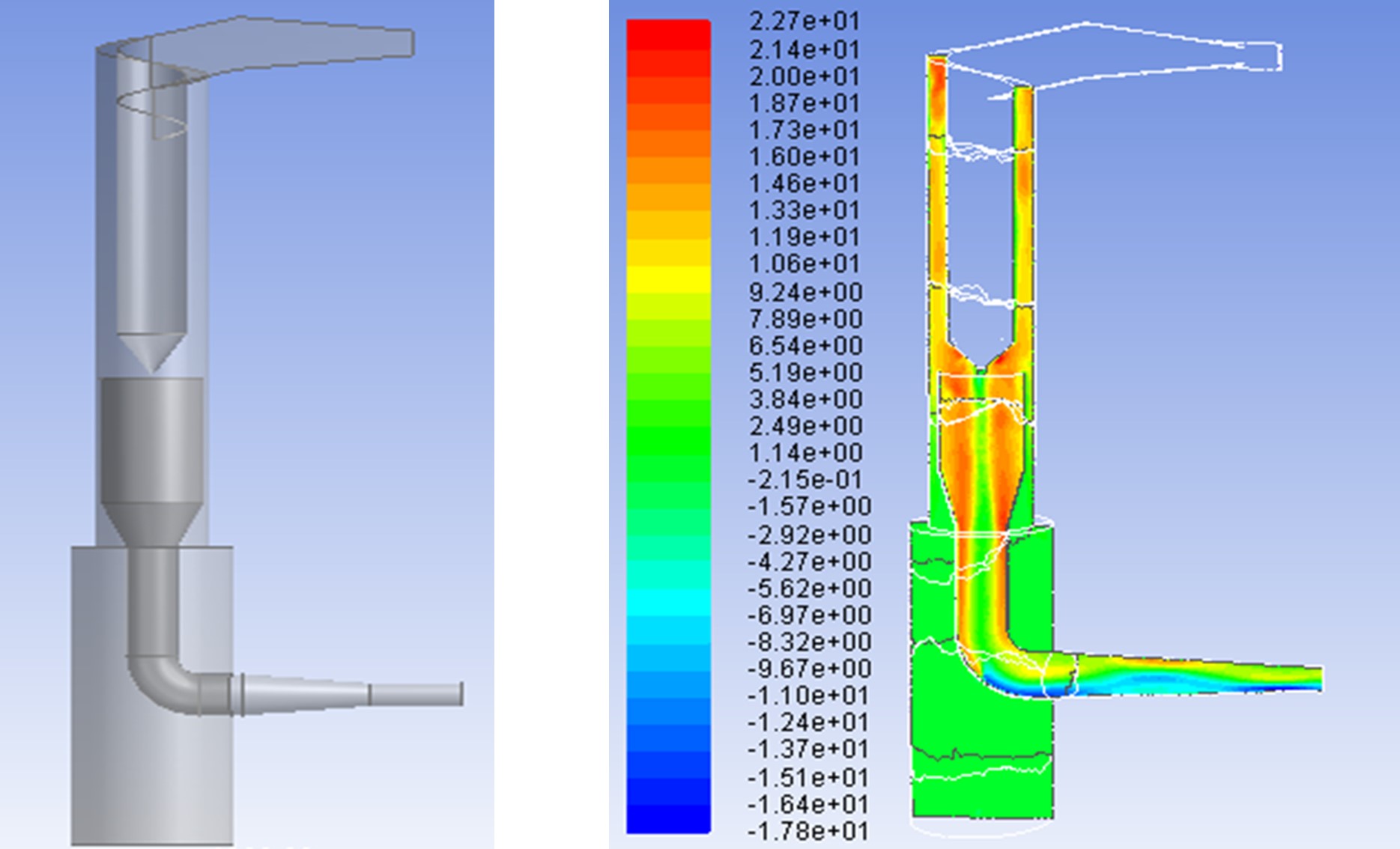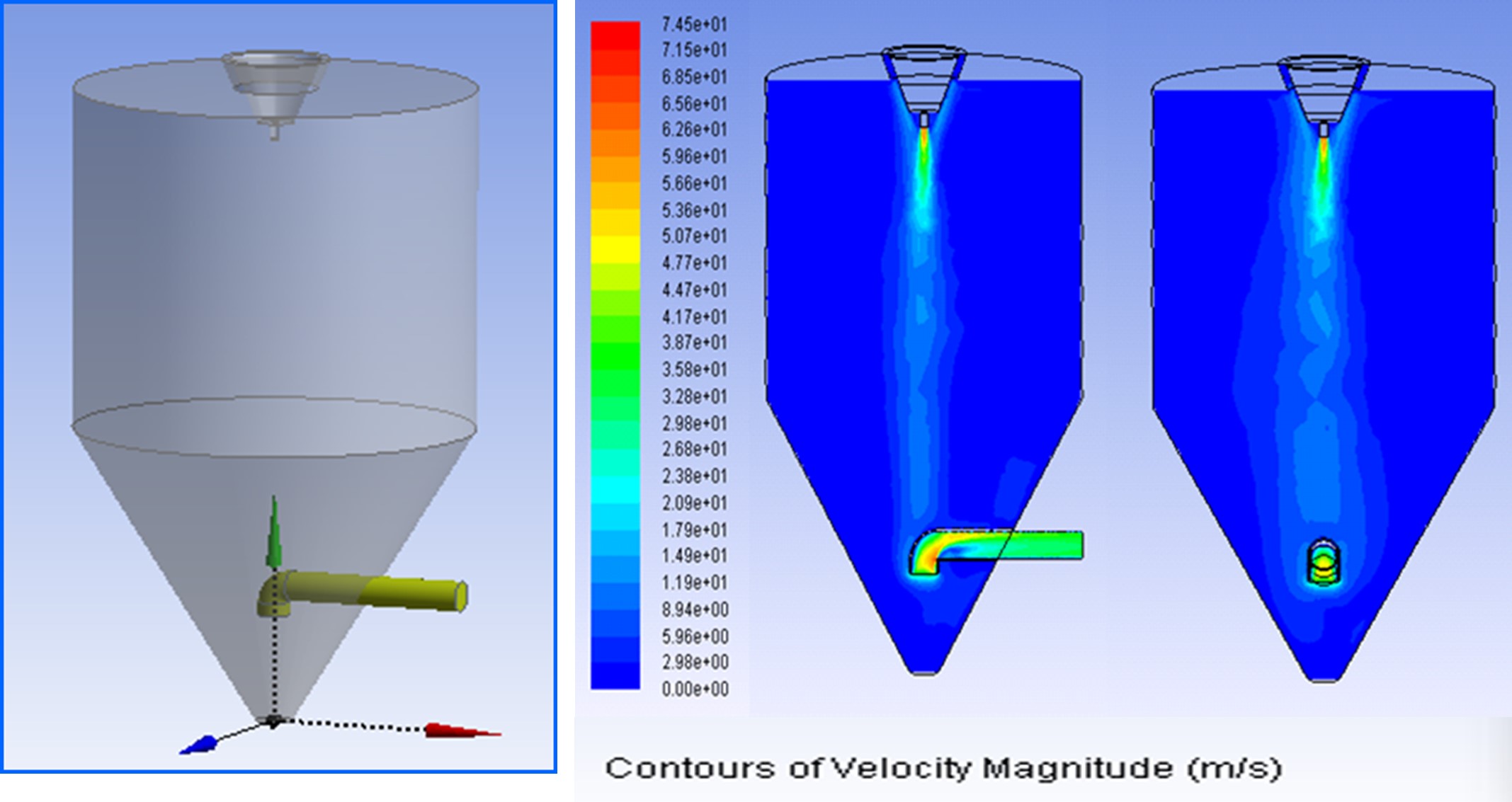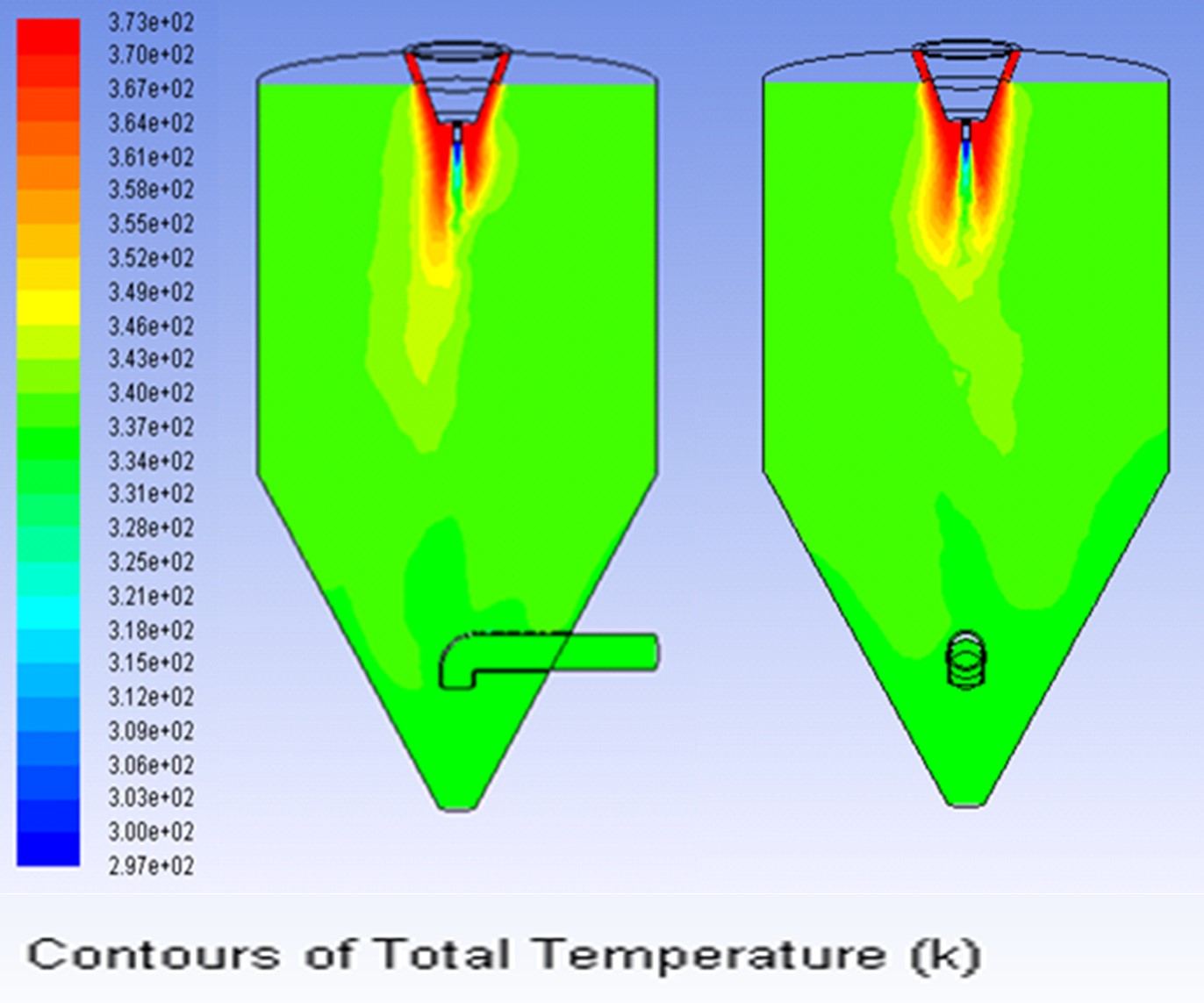Computational Fluid Dynamics (CFD)
What we do
Computational Fluid Dynamics (CFD) stands out as a sophisticated tool in modeling and analyzing fluid mechanics. CFD relies on advanced computer simulations and mathematical modeling to analyze the intricacies of fluid flows. The process involves discretizing the fluid domain into smaller (finite) elements and solving complex equations, such as the Navier-Stokes. With the help of CFD, it is possible to study complex problems involving fluid – fluid, fluid – gas, fluid – solid interactions by using partial differential equations.
Examples of our non-proprietary projects are shown below.
Design of the Pyrolysis Reactor


Performed analysis of performance and proposed design improvements of Industrial Pyrolysis reactor. Evaluated reaction kinetics and conversion. Predicted flow and temperature profiles, proposed design improvements.
Design of the Cyclone Gas Separator

Performed analysis of separation processes of inhomogeneous gas systems. Evaluated hydrodynamics and degree of air purification.
- Main benefits of CFD:
- It has potential to save time, effort, and cost in the design process.
- Allows to approximate a real physical situation numerically.
- Provides detailed insights into fluid behaviors, including hydrodynamics, heat transfer, and chemical reactions.
- Enables professionals to optimize systems and processes, significantly reducing the need for extensive physical prototypes.
- Widely used in industries like aerospace, automotive, energy, environmental engineering, and life sciences


